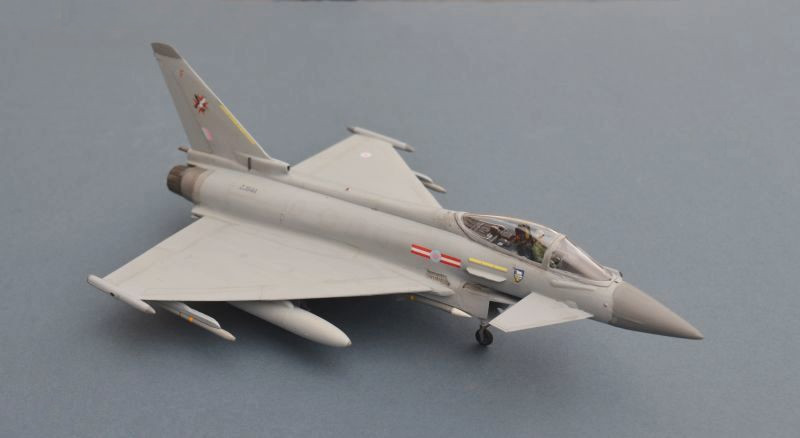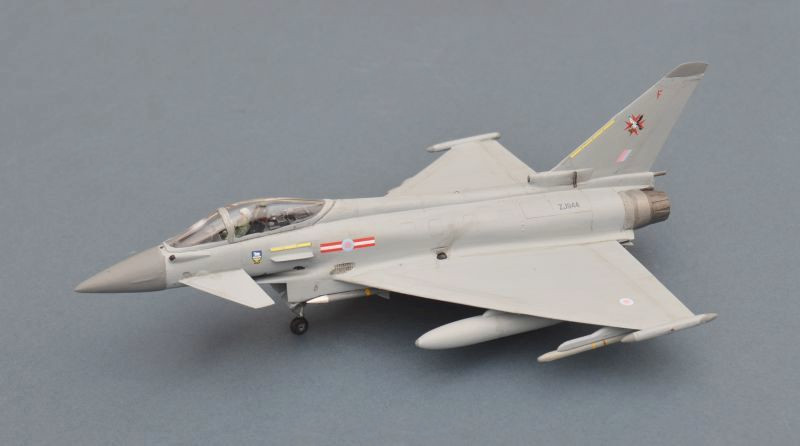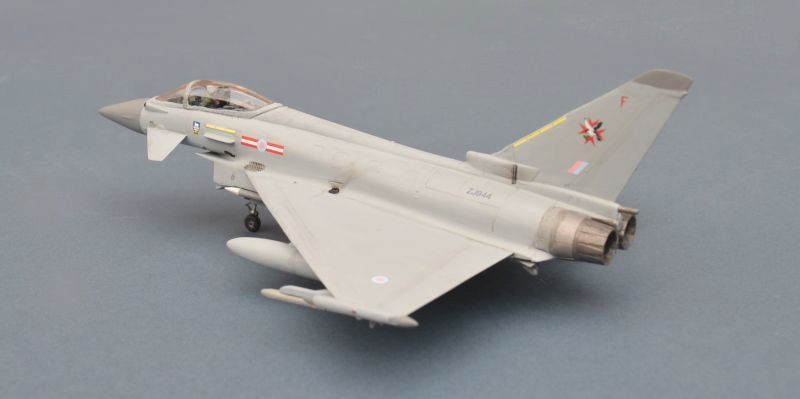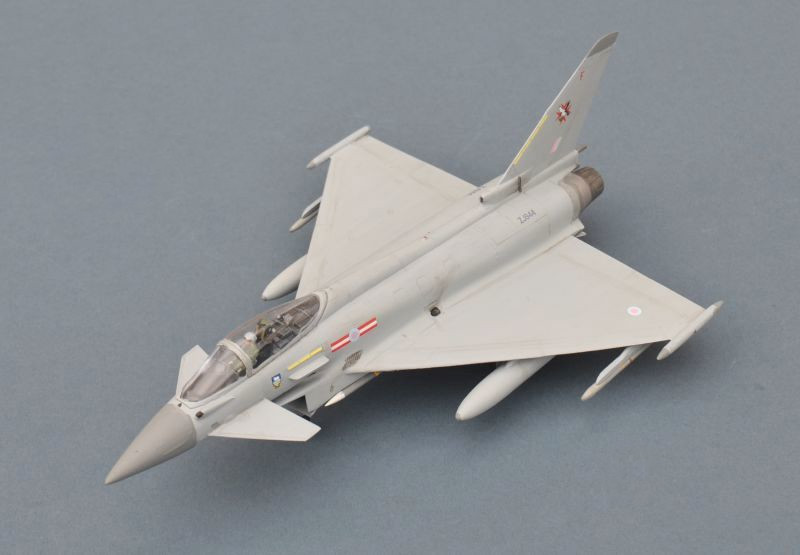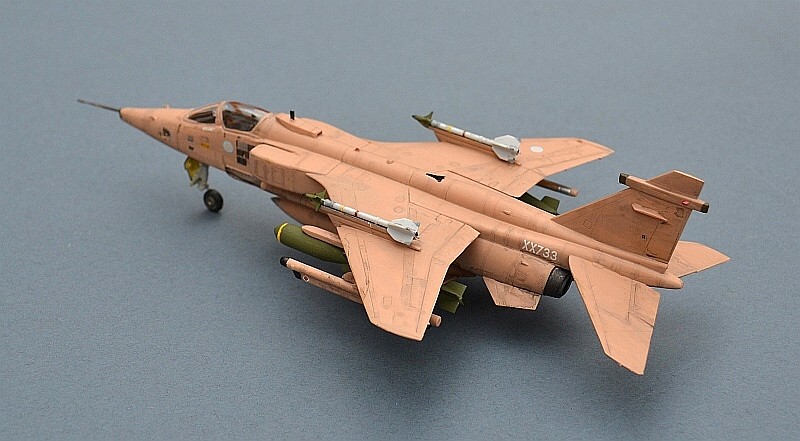
Twelve RAF Jaguars made a very significant contribution to Gulf War one (UK Op Ganby, US Op Desert Storm) and were some of the first RAF combat assets deployed to the region. Between them, the 12 aircraft flew 612 combat sorties, achieving an astonishingly high sortie rate and level of availability. Twenty eight French Air Force Jaguars also participated (Op Daguet), with a similar level of operational success.
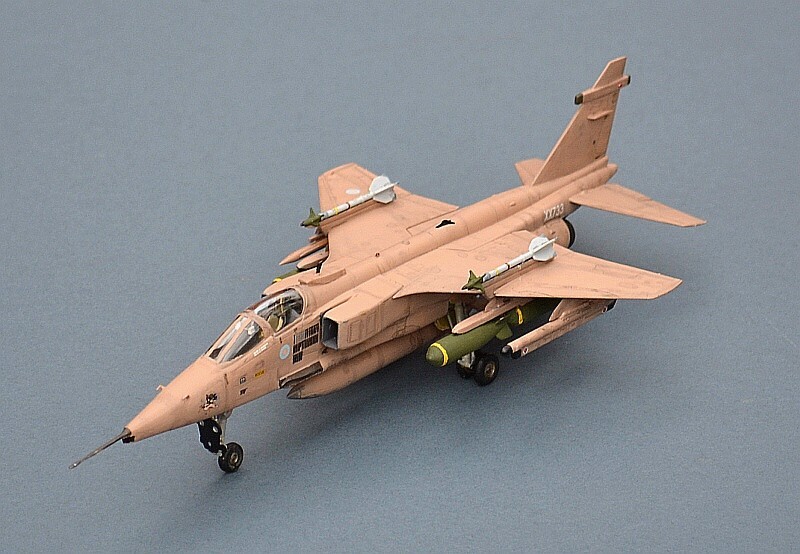
Friends & Allies -
Fixed wing aircraft of the Royal Air Force (1980-
(many with some sort of naval connection!):
The Revell Jaguar is a joint Revell/Italeri mould that has also appeared in Tamiya
boxes in the Far East. It assembles without drama and is acceptably accurate. Decals
in the Revell issue include an RAF Gulf War aircraft (including semi-
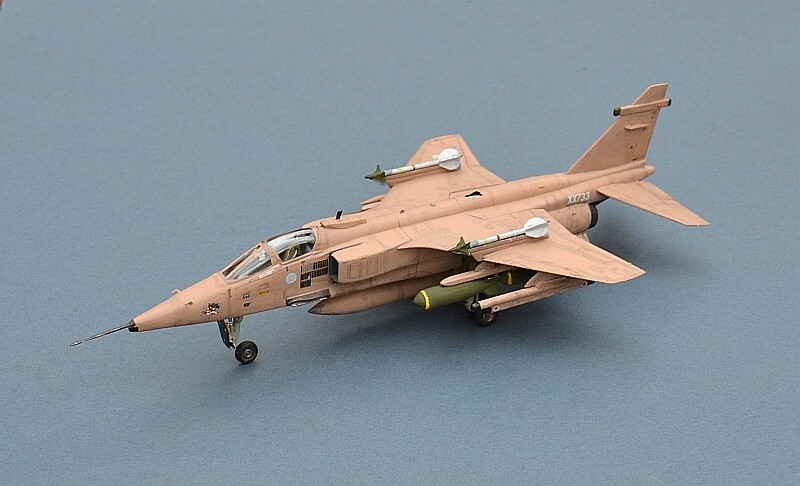
Since its premature departure from RAF service during the savage 2007 defence cuts,
the Jaguar has become a somewhat forgotten aircraft. Developed in the late 1960s
as a joint Anglo-
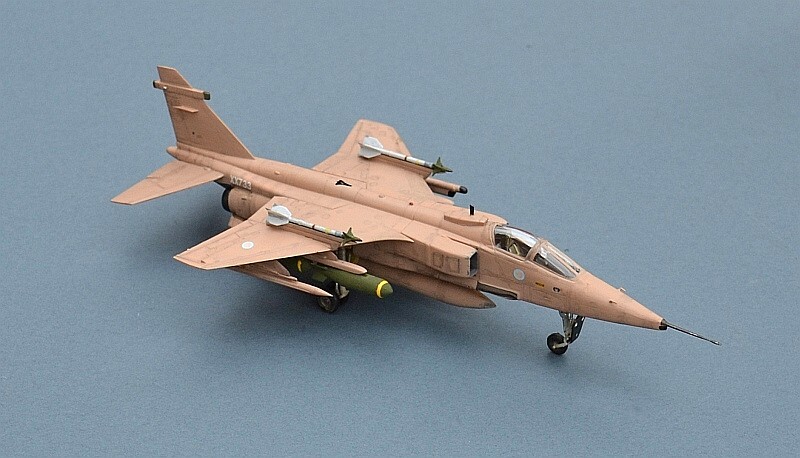
In its final RAF form, the RAF Jaguar GR.3, with TERPROM navigation and precision guided weapons, was a remarkably capable aircraft.

The RAF adopted an early variant of the hugely successful HS 125 light passenger jet as a radar and navigation trainer. Originally a DeHavilland design, the Dominie is now approaching the end of its service life, but several aircraft were updated in 2003 to add Ground Mapping Radar (GMR) and modern avionics.
During the Cold War, RAF Dominies were allocated a war role of coastal maritime reconnaissance, working with RN Offshore Patrol Vessels to escort coastal convoys around the UK. Later and larger variants of the HS125 are also used by the RAF as VIP transport aircraft.
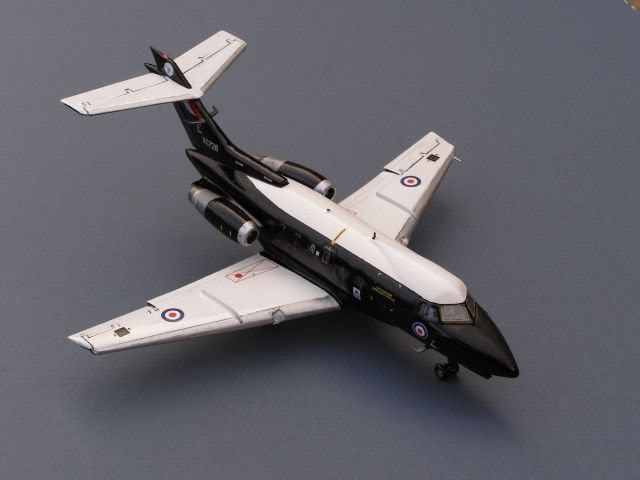

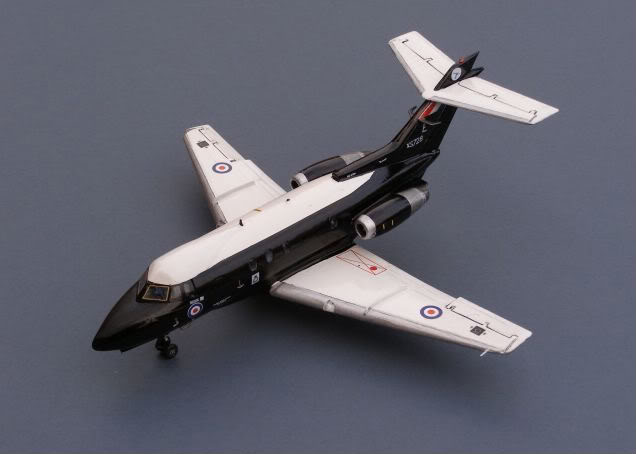
This is the Airfix kit in its current (2008) issue, with a superb set of decals for an all black Dominie of 55(R) Sqn in 2004 and an earlier red and white aircraft. The kit builds nicely although some of the detail is rather crude by current standards. Unfortunately the cabin window configuration has changed recently and the kit represents the earlier layout. The wing fences are also too far inboard, but otherwise this is a really nice little kit. Link to Build Page
Another example of the old Airfix kit, this time using the changed mould to represent
the F.3 version with its larger tail fin, Red Top armament and no gun ports. At
some point between the kit above and this one, it went through a phase of being a
snap-
The F.3 variant of the lightning deleted the gun ports and introduced the more capable
Red Top missile along with the Stage 3 enlarged and squared-
RAF HARRIERS
Fujimi's Harrier kits are reasonably accurate, but not easy builds. This one represents
an aircraft of 1417 Flt, RAF Belize in the mid 1980s. Whilst I was serving in HMS
LIVERPOOL, during our 1987 "West Indies Guardship" deployment (its a dirty job, but
someone has to do it!), we exercised with 1417 Flt off the coast of Belize, providing
our splash target for them to practice attacking fast moving sea-
The GR.3, easily recognised by its extended nose fairing to house the laser target marker and range finder, was the RAF's second Harrier variant, with improved avionics and uprated engines. Harriers were deployed to Belize from 1981 to 1993, in response to potential threats from Guatemala and Honduras. The aircraft were ideally suited to the rough deployed conditions, if occasionally limited by the temperature.

Italeri's GR.5 and GR.7 kits are crude and not very accurate, although they do look fairly convincing when built.
This is the earliest issue (AV-
The GR.5 was the RAF's first version of the second generation Harrier II, built jointly
as the AV-
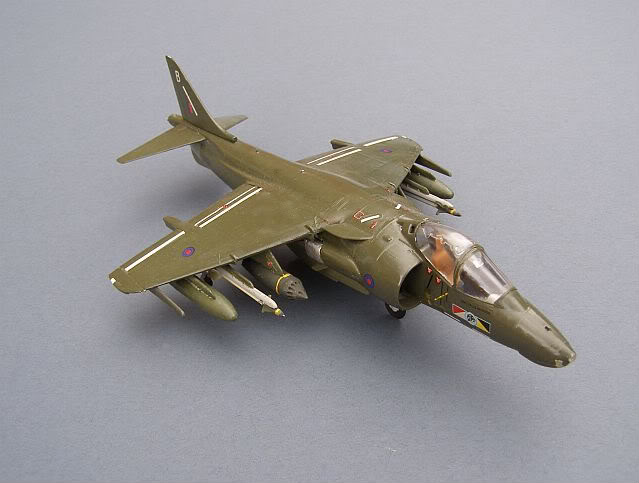
Italeri also issued a further revised version of the kit as a GR.7, with some nice (although not entirely accurate) decals and weapons. Unfortunately these do not include the Paveway laser guided bombs worn by this model, which come from a separate Italeri weapons set.
The GR.7 introduced full night operating and precision weapon capability to the RAF's Harrier Fleet as well as a further uprated engine. Existing GR.5s were converted to the new standard. Although designed to operate at low level in the European Theatre, the GR.7 now operates at medium level and has been the backbone of RAF combat operations in Iraq and Afghanistan since the 1990s, proving to be a reliable and effective weapons platform. Since the creation of Joint Force Harrier, Fleet Air Arm pilots have also flown former RAF GR.7s, with the Naval Strike Wing sharing Afghanistan duties with the RAF.
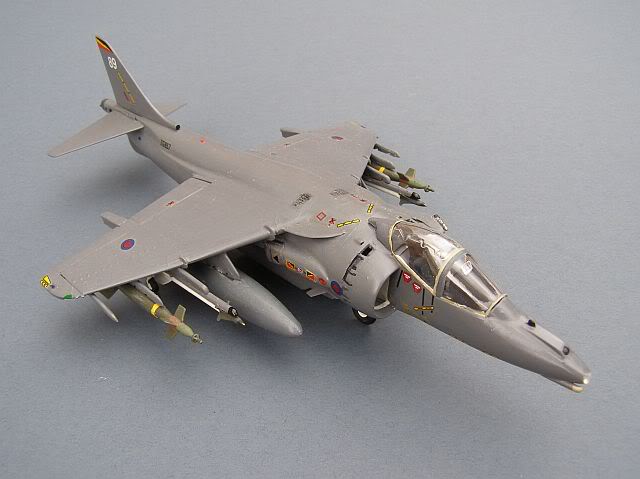
The joint RN/RAF Harrier fleet is now being further improved as the GR.7A and GR.9, with yet further engine and weapons system improvements:
ESCI’s first generation Harrier kits are currently the best available in 1/72, accurate,
well detailed and thoughtfully engineered. Whilst the Sea Harrier and GR3 have been
re-
Some simple changes and new decals are all that is needed to turn it into a representation of one of the RAF’s first Harriers.
The first operational variant of the Harrier family was the GR.1 and up-
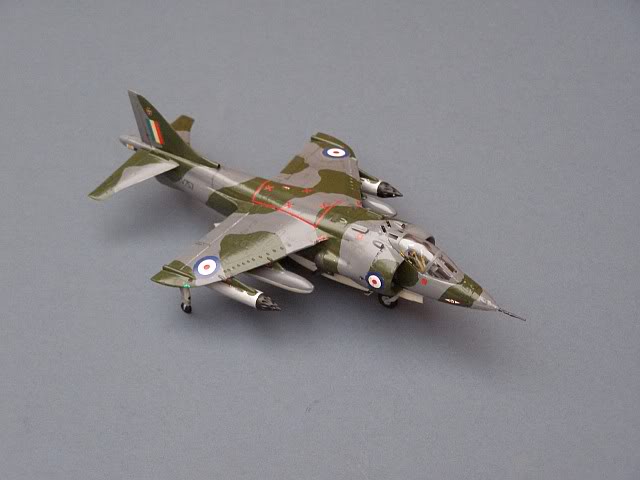
Other than the expensive Hasegawa kits, the interceptor variant of the Tornado is
not well provided for in 1/72. This is the Airfix kit, which is rather crude and
lacking on detail, but scrubs up tolerably well. This issue came as a gift set aimed
at less experienced modellers, with good looking, but simplified, decals for the
retirement scheme worn by 111 Sqn at RAF Leuchars in 2010. To complete the build
I added some ex-
The F.3 Tornado replaced the Phantom and Lightning in RAF service. Entering service in 1987 it was finally withdrawn in 2011, after a remarkably long and successful period providing air defence of the UK. The Air Defence Variant of the Tornado was designed specifically for RAF long range interceptor missions over the North Sea and Atlantic.
With its Foxhunter radar, JTIDS data link and armed with semi-
As well as the RAF and Royal Saudi Air Force, Tornado F.3s saw brief service with
the Italian Air Force as a stop-
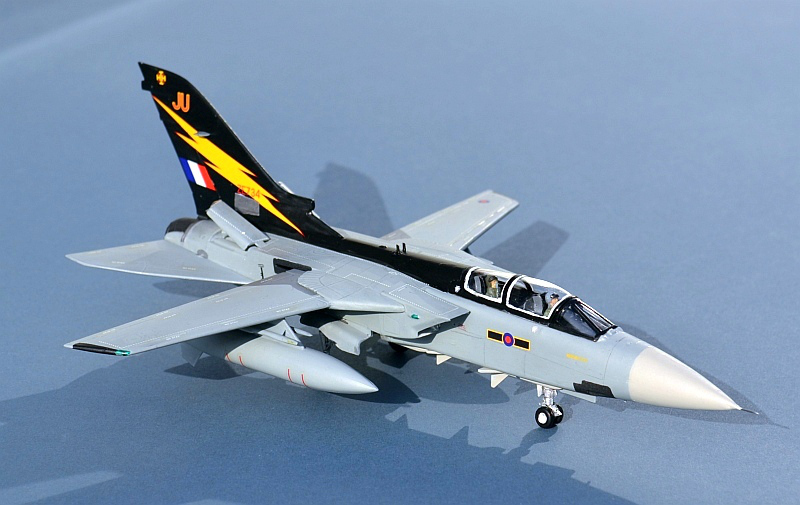
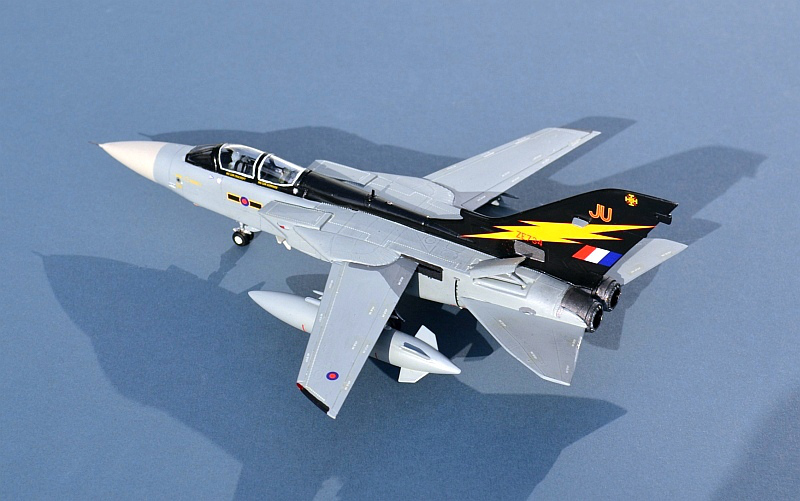
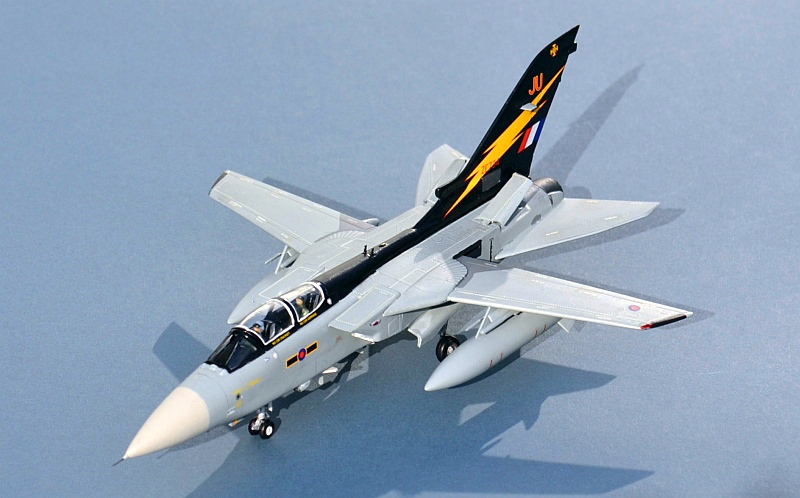 Main Index
Main Index
© www.gengriz.co.uk
This is the old Airfix GR.1 kit, updated with a number of aftermarket and “spares box” changes to turn it into an updated GR.4. Decals from Airfix’s own GR.4 issue complete the transformation. Link to build page
During the 1990-
Drawing on the lessons of the first Gulf War and changing tactics, in 1994 the RAF commissioned a number of updates to its Tornado GR.1 fleet, bringing all aircraft to a common GR.4 fleet standard that incuded the ability to use more modern smart weapons Paveway IV & Brmistone), a new Forward looking Infra Red (FLIR) system (replacing the port 27mm Mauser cannon), secure communications, GPS, a tactical datalink and advanced cockpit avionics. Saudi, German and Italian Tornados have all seen similar updates.
The final flight of an RAF Tornado took place in April 2019, ending 39 years of front-
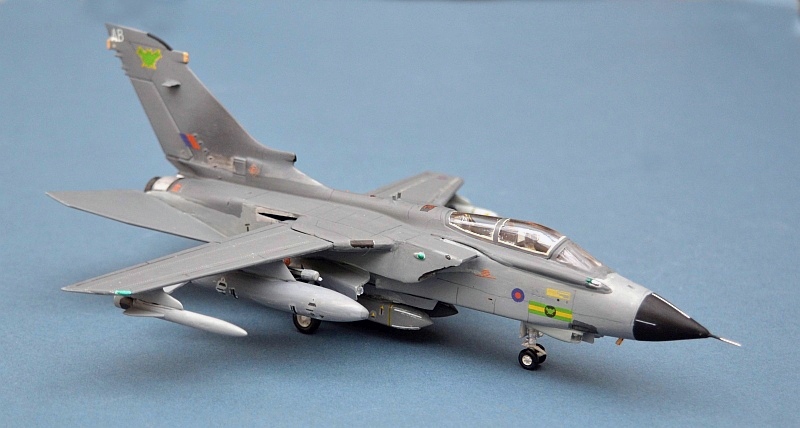
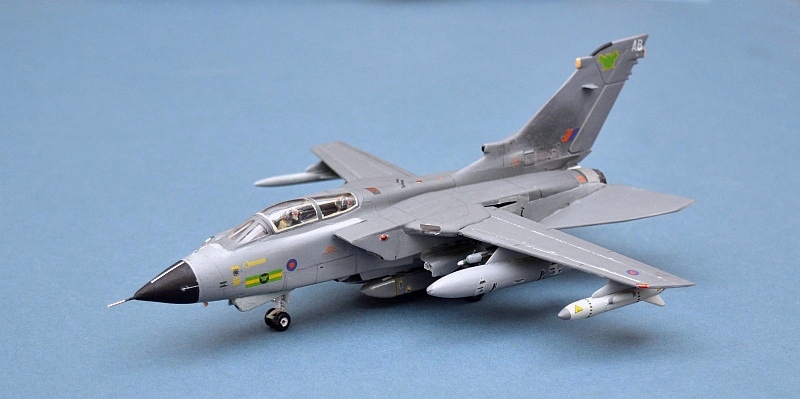
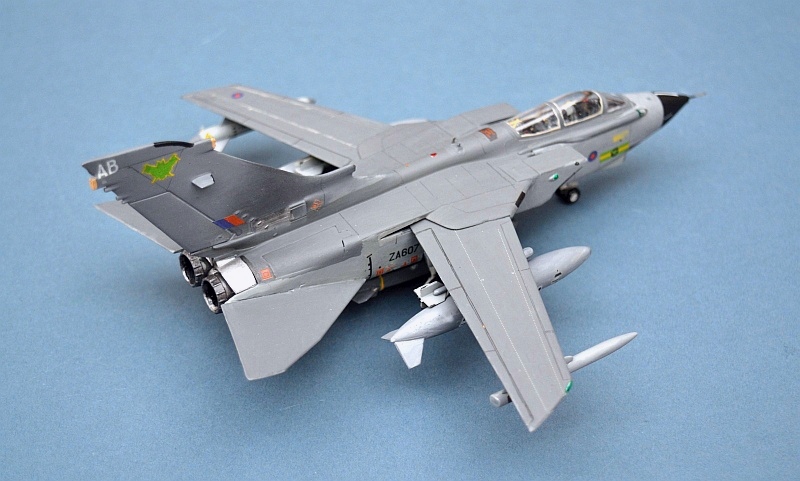
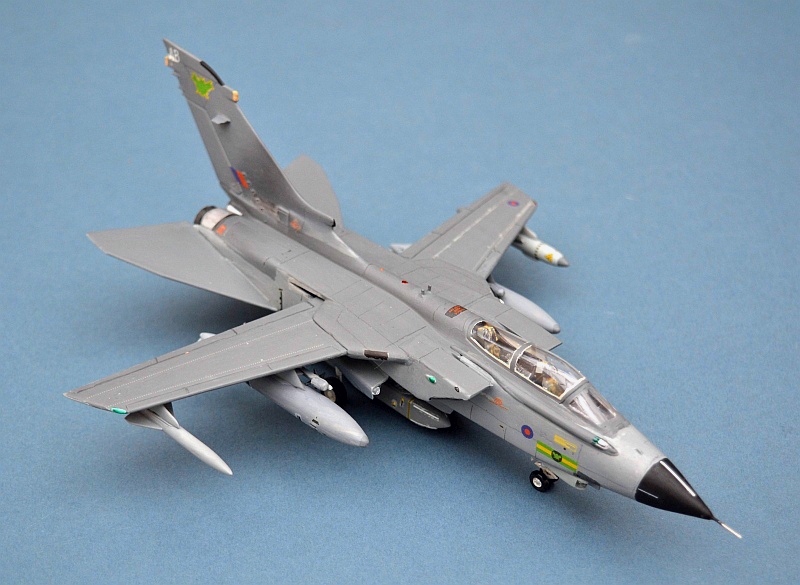
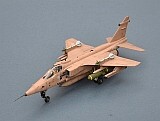
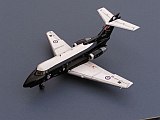
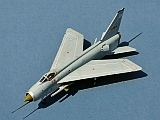
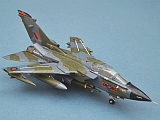
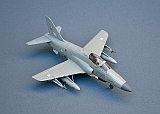
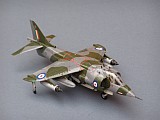
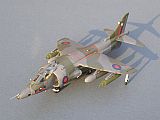
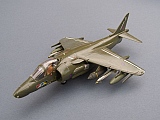
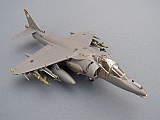
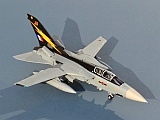
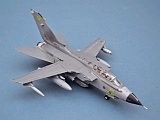
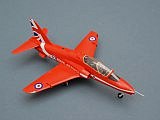
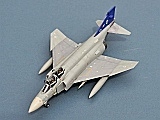
This is the marvellous Fujimi Phantom FGR.2, with Modeldecal markings. And Flightpath ladders
The Phantom was originally procured by the RAF as a ground attack and reconnaissance
platform following the failure of the P.1154, F-
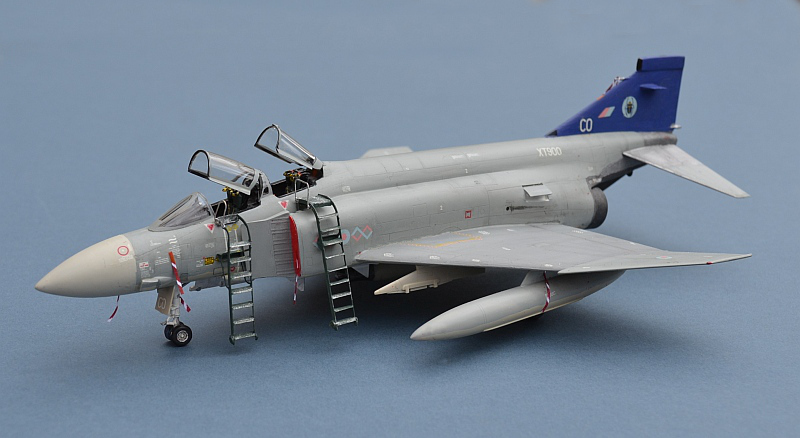
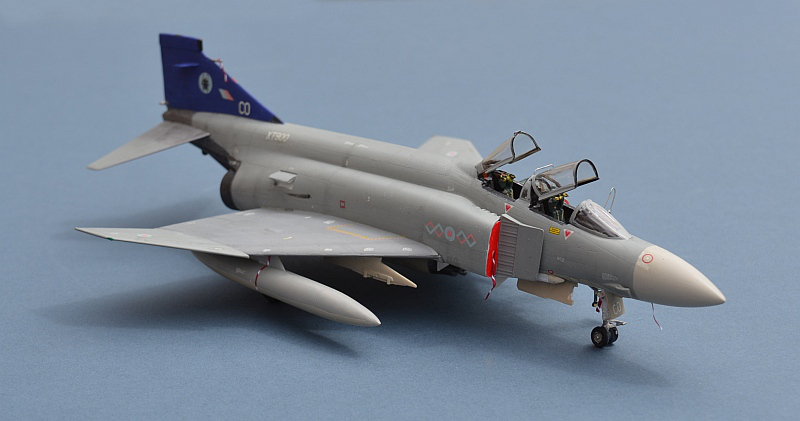
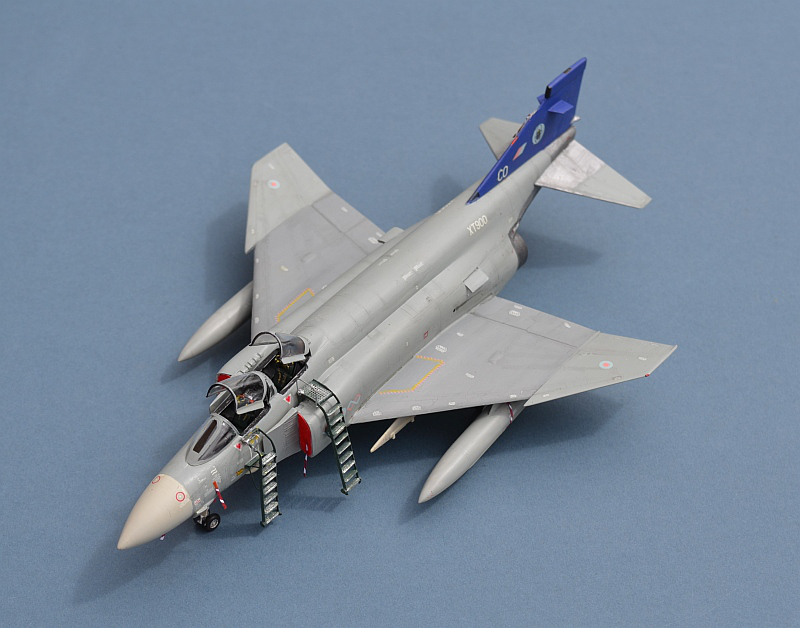
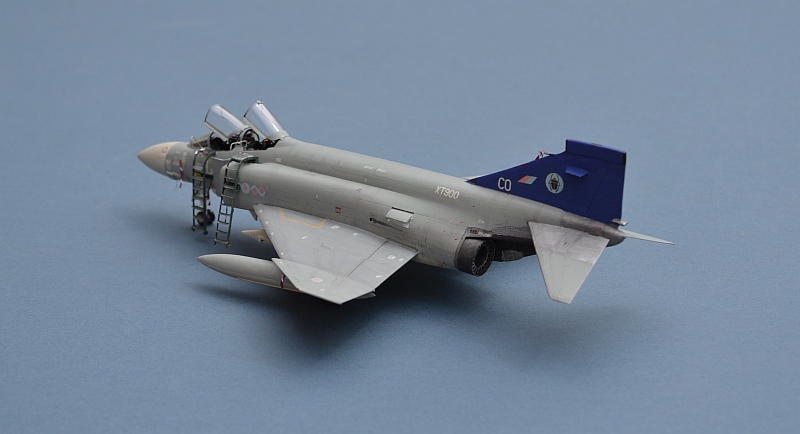
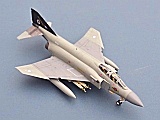
This is the Italeri Phantom F-
In 1984 the UK purchased 15 ex-

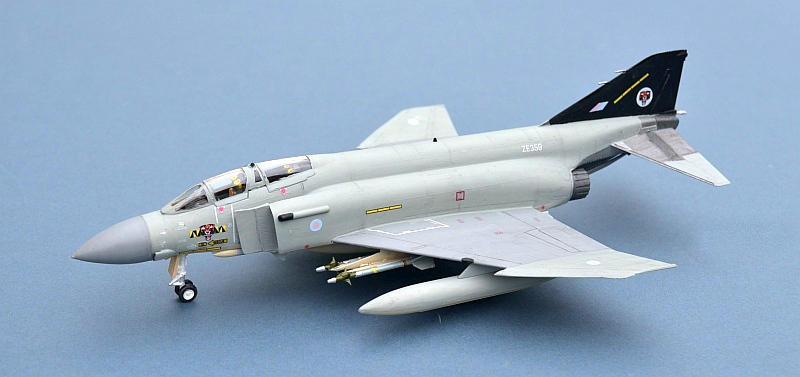
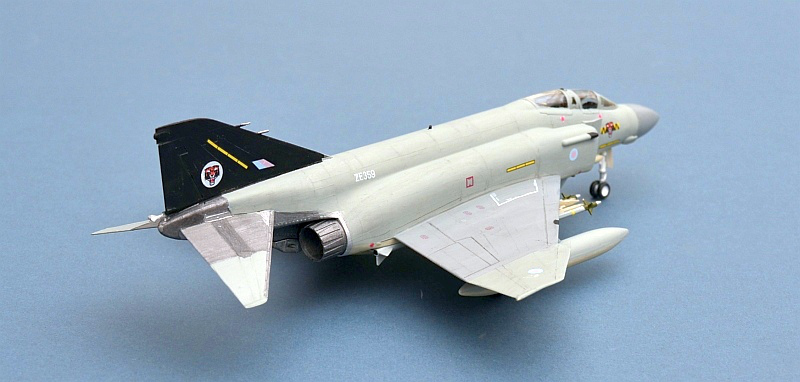
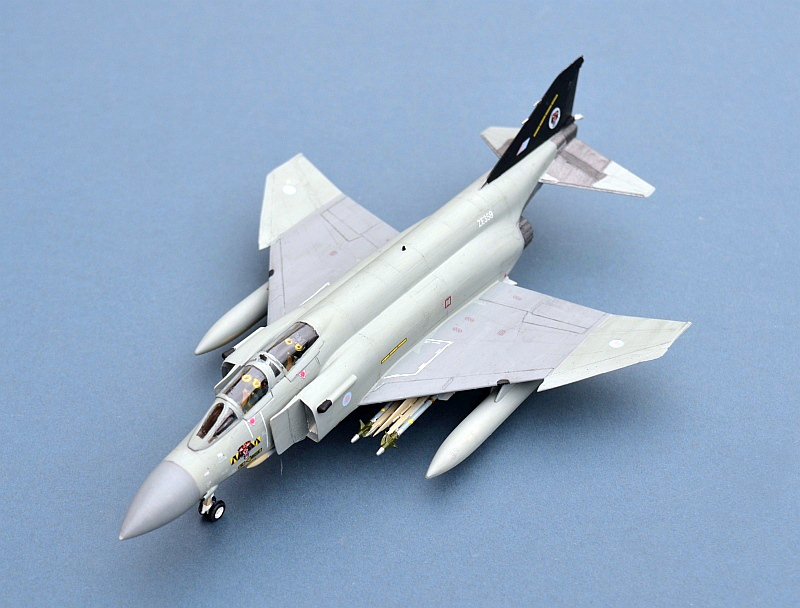
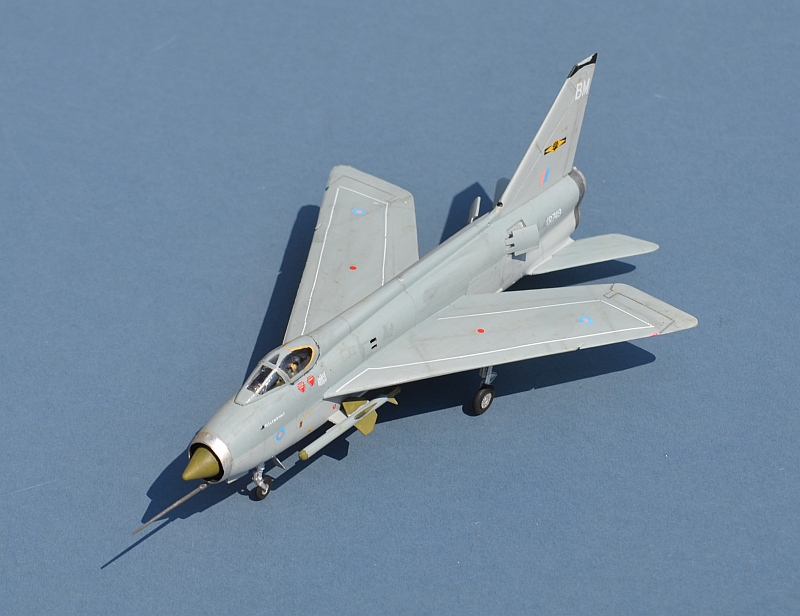
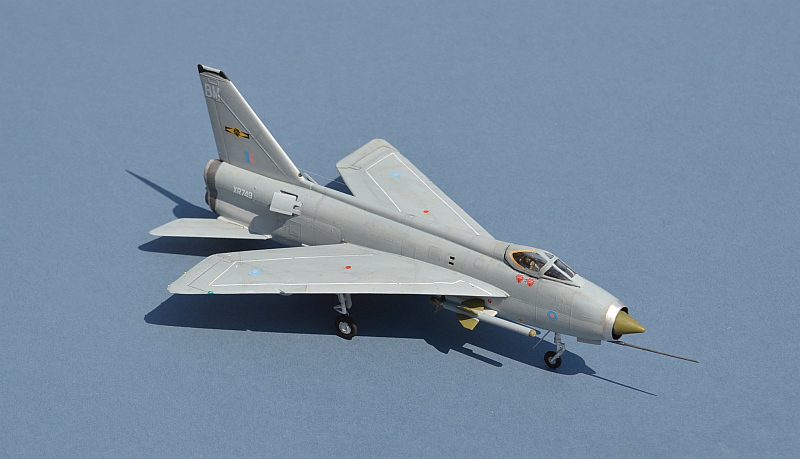
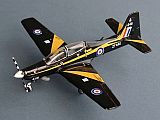
This is the Airfix Tucano kit in its early 2000s issue Link to build page
The Short Tucano was a license built variant of the Embraer Tucano with a more powerful engine and other modifications for UK use. It entered service in 1988 and continued to train RAF and RN aviators until late 2019.
Airfix released this nice modern kit in about 2009. Although clearly related to their newer T.1 kit, it has a new fuselage and wings. Decals in this issue include this complex and difficult to apply demonstrator scheme; the current (2020) issue has equally attractive but much simpler Canadian, RAF and Australian markings. Link to build page
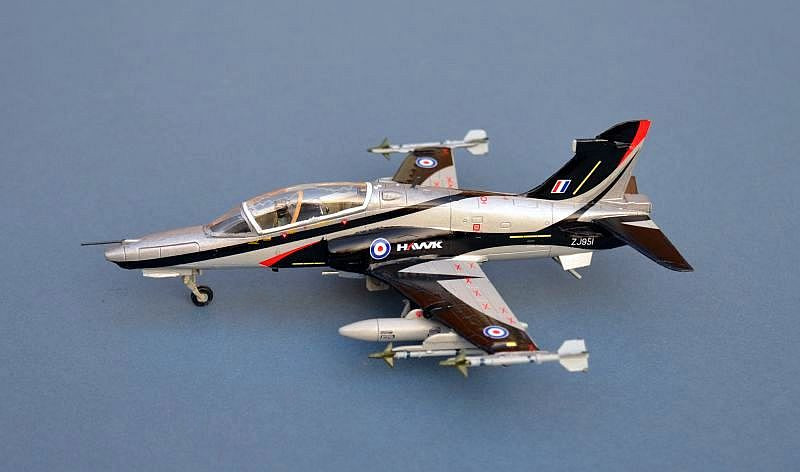
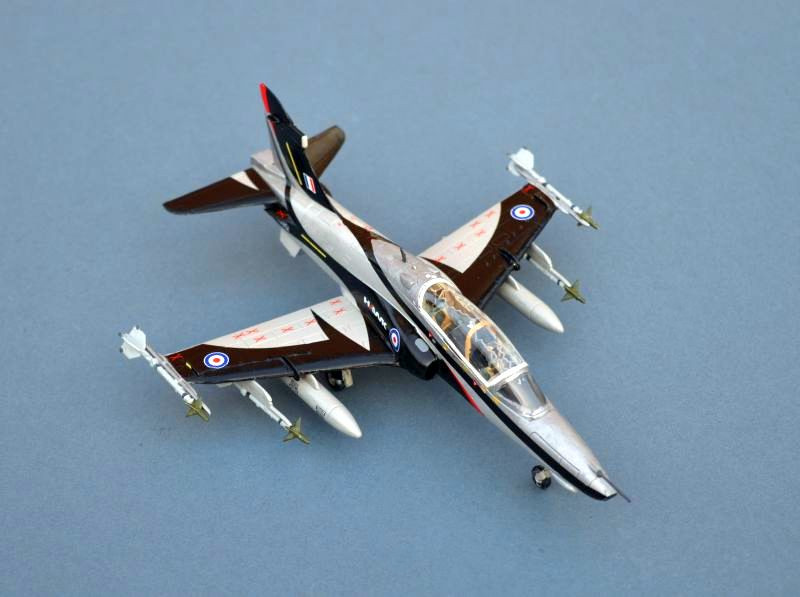
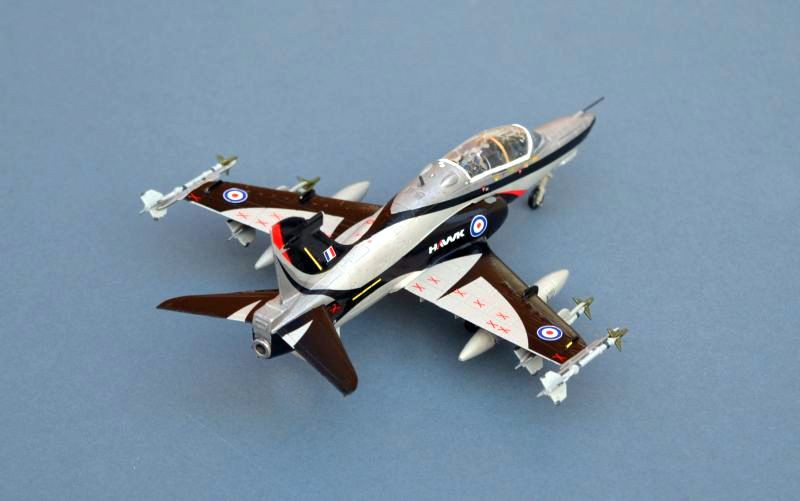

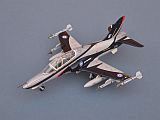
First taking to the air in 1974, the HS.1182 Hawk has proved to be one of the most successful British aircraft of all time, remaining in production for over 46 years with more than a thousand built, including the single seat Hawk 200 fighter. It was selected in 1981 as the US Navy’s carrier landing trainer, using a modified carrier capable variant built by McDonnell Douglas (now Boeing), but is perhaps best known to the public as the mount of the famous RAF Red Arrows display team.
BAE Systems have continued to develop the Hawk design, with its most recent version, the Hawk 120 series, featuring an elongated nose, updated fuselage centre section and new wings,as well as other aerodynamic and avionics improvements. In this form it is sold as a Lead In Fighter trainer (LIFT) and Advanced Jet Trainer, with the RAF and RN now introducing the Mk.128 Hawk T.2 to replace older Hawk T.1s.
To ease transition to more capable jet aircraft, the current Hawk has an updated glass cockpit that emulates the look and feel of operational fighters. For the Indian Air Force and Navy, Mk.132 Hawks are built locally by Hindustan Aeronautics (HAL), whilst the Royal Saudi Air Force also builds the Mk.165 variant locally.
This is also the newer Airfix T.1 kit which is an easy build. Link to build page
In the 1980s and early 1990s, the RAF allocated a wartime air defence role to a number
of armed Hawk trainers. These would operate with Tornados, using their agility and
low observability for close in dogfighting, as well as point defence of key sites.
Aircraft operated in both wrap-
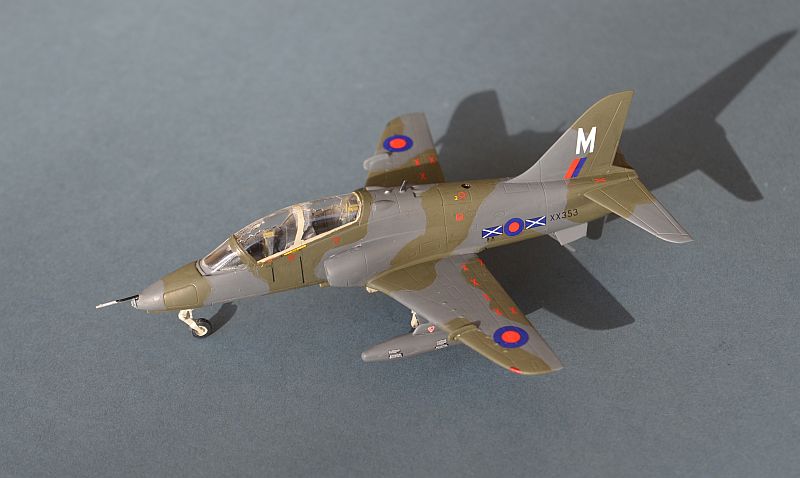
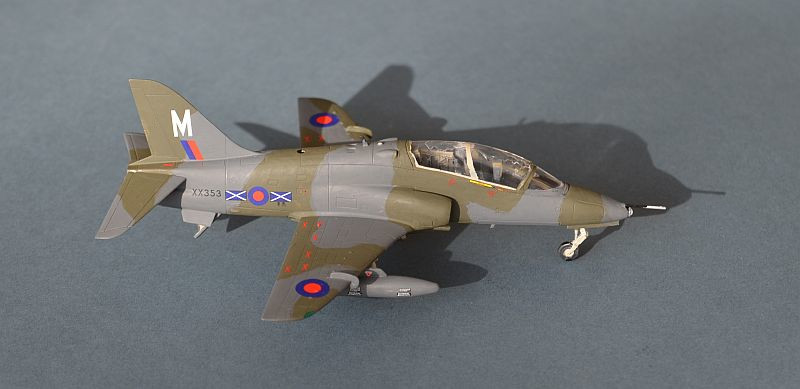
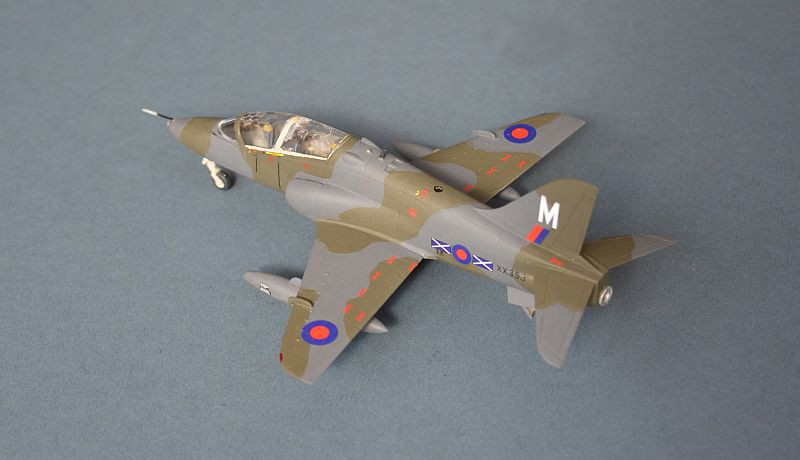
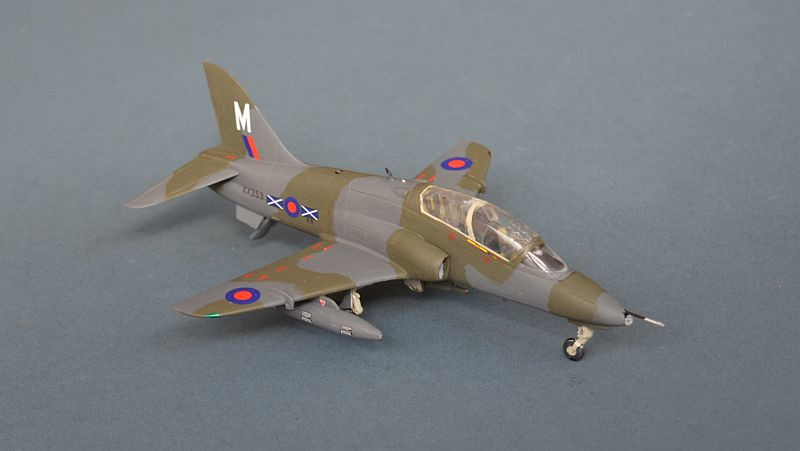
British Aerospace Hawk T.1, The Red Arrows, Royal Air Force, RAF Scampton 2018.
Airfix released this nicely formed modern kit in about 2015, replacing their existing Hawk kit, which wasn’t too bad. This is the gift set issue, which comes with cement, brush and some slightly unusable acrylic paint. The kit and its decals are very nice and an easy build. Painting the airframe and applying the decals need some skill though. Link to build page
First taking to the air in 1974, the HS.1182 Hawk has proved to be one of the most successful British aircraft of all time, remaining in production for over 44 years with more than a thousand built.
Although originally designed as a twin seat trainer, it has seen considerable export success in both double and single seat forms as a fighter and ground attack aircraft with over 18 foreign operators using the Hawk at some time. The US Navy also uses the carrier capable Goshawk variant, with tail hook and strengthened undercarriage for advanced carrier landing training of new USN and USMC pilots.
Operationally, both Malaysian and Zimbabwean Hawks have both seen air to ground combat
against insurgent forces. During the mid-
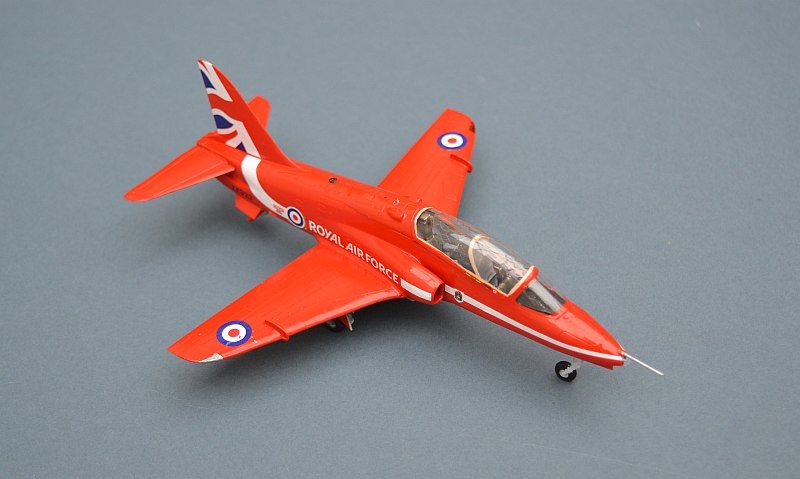
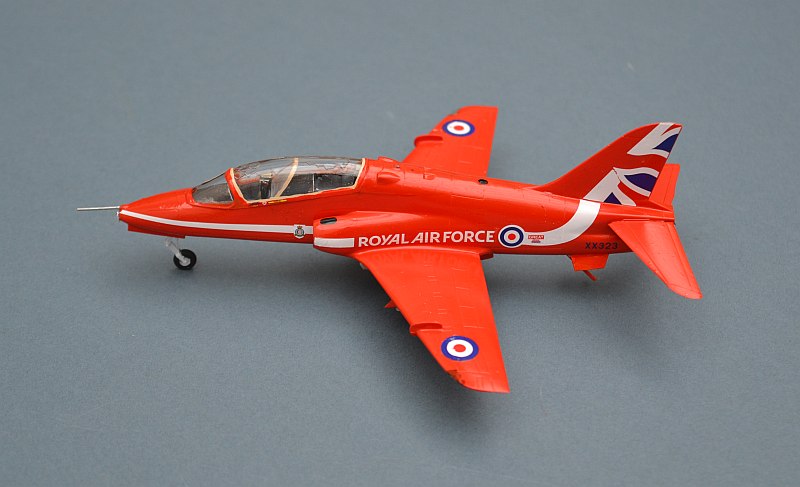
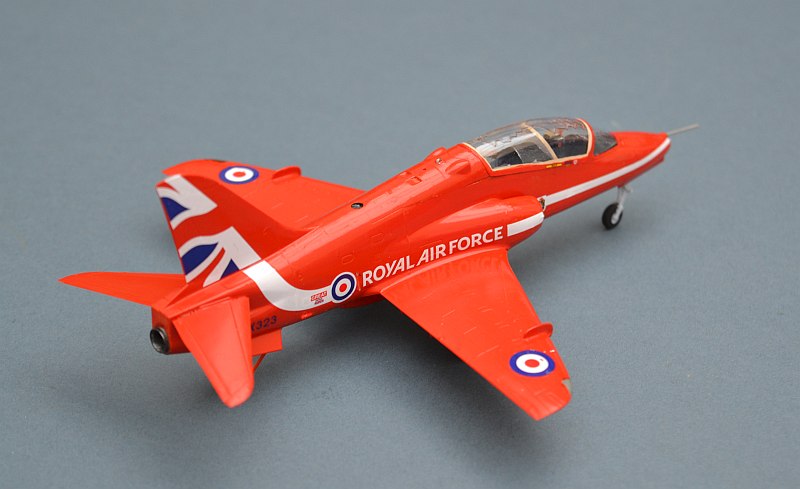
An older build. The ESCI Tornado wasn't bad in its day although it is now totally eclipsed by Revell's newest mould. This is out the box; like most GR Tornado kits (including Hasegawa's), the nose profile isn't quite right !
The Tornado GR1, GR1A, GR4 and F3 have been the backbone of the RAF since the mid 1980s. Designed as a low level penetrator, the GR4 now performs a high level precision bombing role. F3s are now being replaced by Typhoon, with the first Conningsby based squadron having assumed Southern QRA duties in Jul 07.
A decision on replacing the GR4 will be needed soon; obvious candidates include the
F-
Lossiemouth's Tornado GR.1s were tasked with Maritime attack operations, carrying the BAe Sea Eagle missile in support of the Royal Navy.
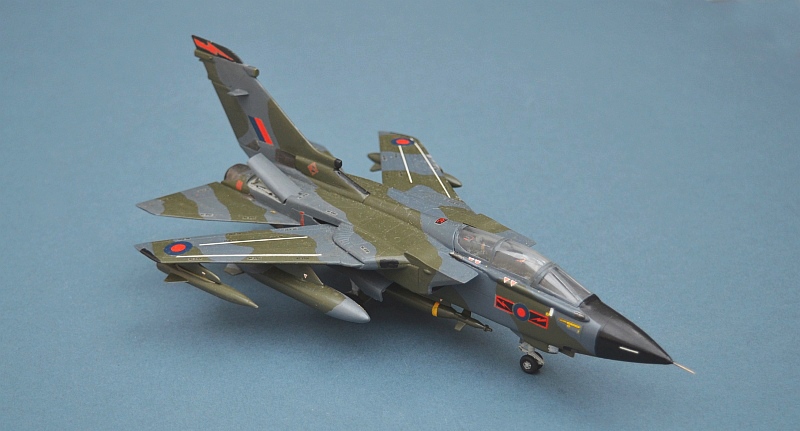
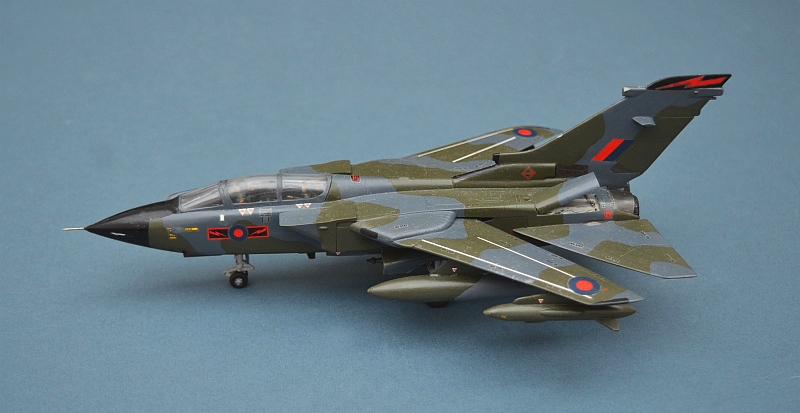
Matchbox's Hawk 200 is the only 1/72 kit of this variant available. I built this some years ago, so it is not quite to current kit build standards. Might update it some day to have the wing tip sidewinder stations of the production aircraft.
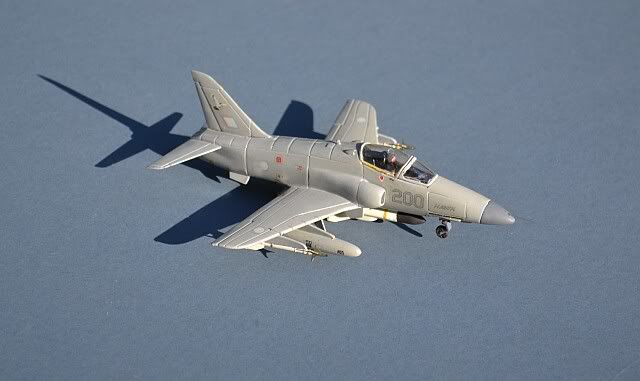
"The last all-
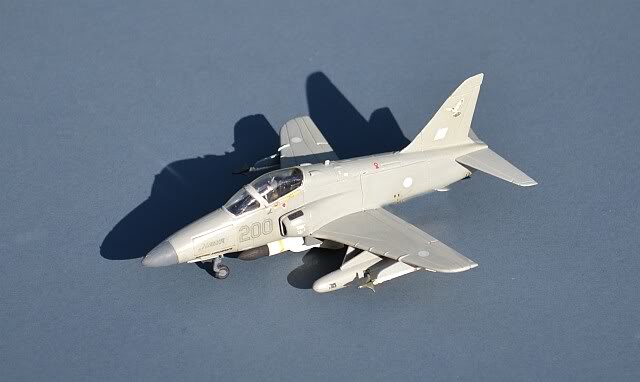
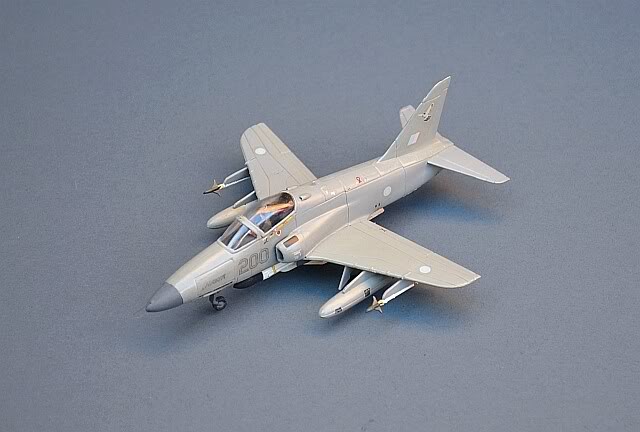
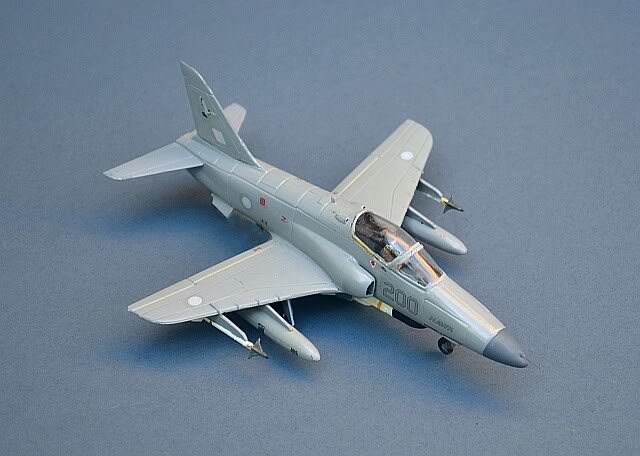
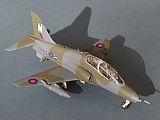
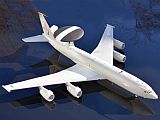
The Heller E-
This one has excellent after-

The E-
For the RAF, the E-
RAF aircraft operate out of Waddington and contribute to the NATO E-
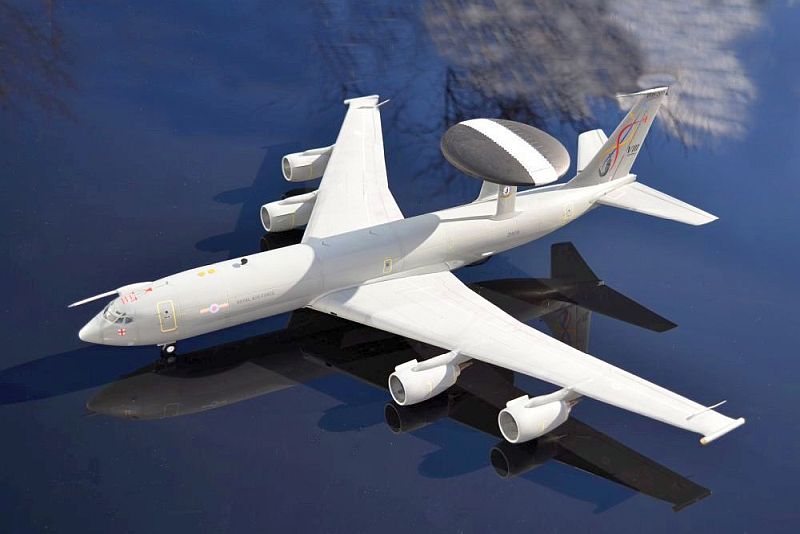
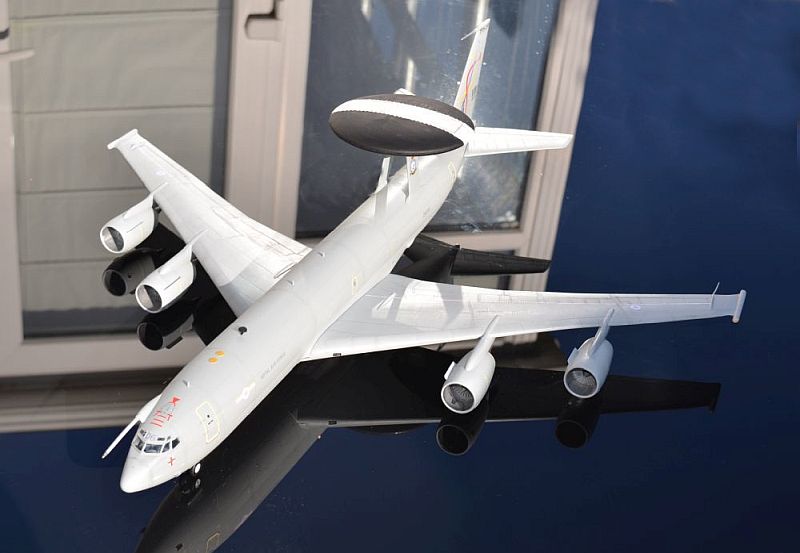
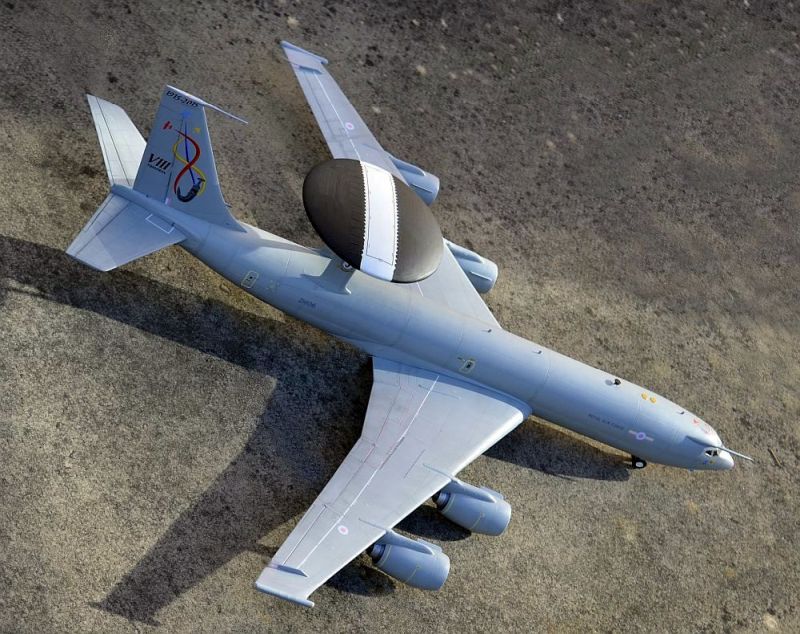
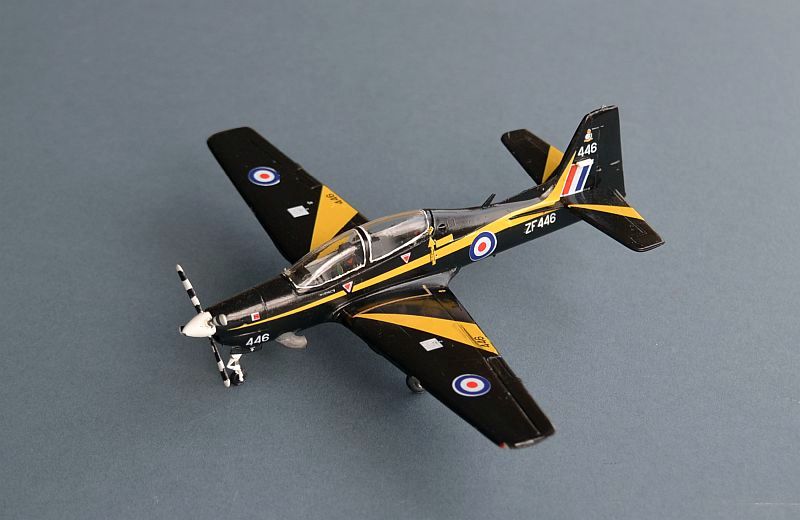
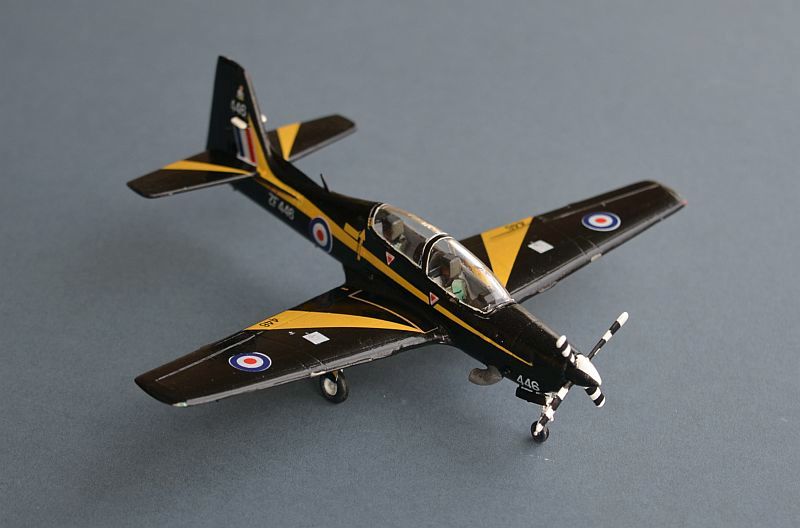
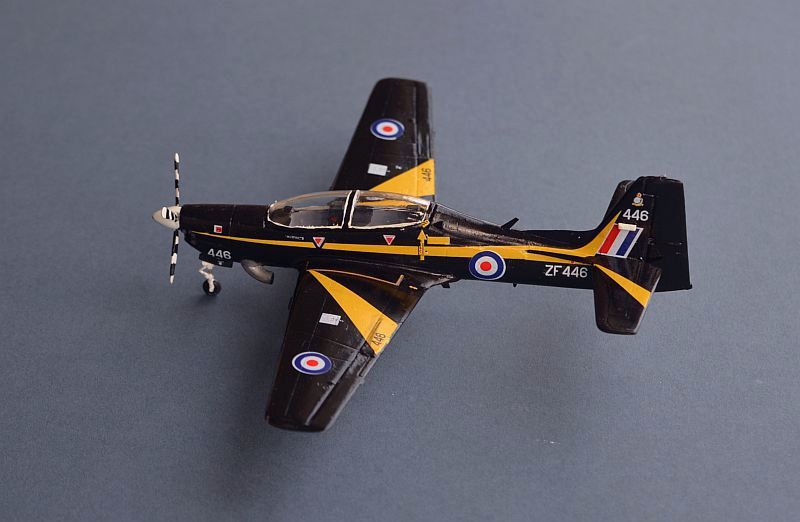
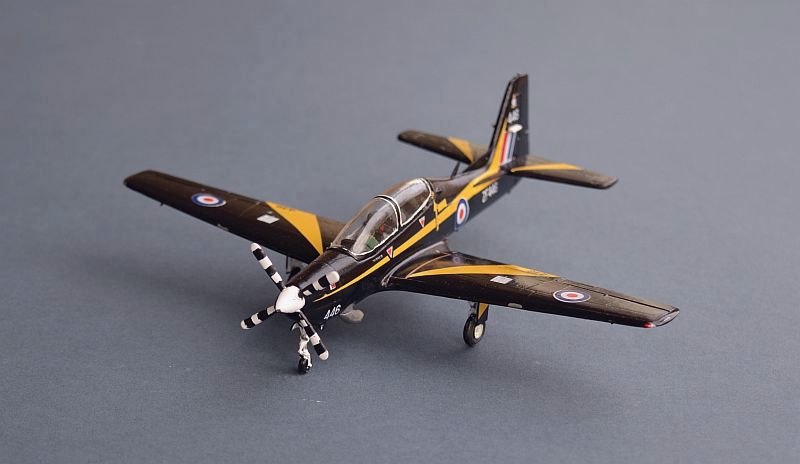
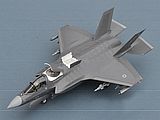
The Airfix F-
The F-
17 Sqn, based at Edwards AF Base in the USA are the UK’s operational test and evaluation
squadron, taking deliver of new F-
During 2021, the aircraft of 617 Sqn embarked in HMS QUEEN ELIZABETH for the Carrier Strike Group 21 global deployment. Although somewhat curtailed by the COVID pandemic, the ship and its aircraft successfully demonstrated the reach of the UK’s Carrier Strike capability around the world, including participation in combat operations against IS over Syria and live interceptions of Russian aircraft that were a potential threat to the NATO Carrier force.
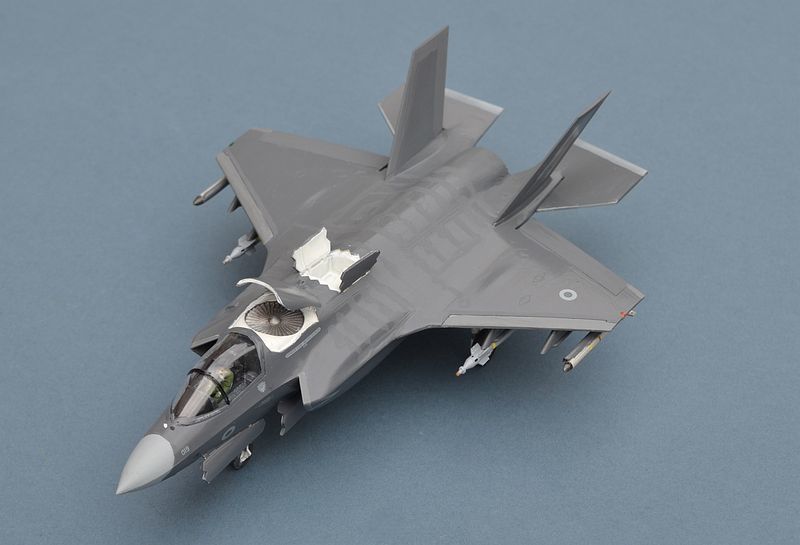
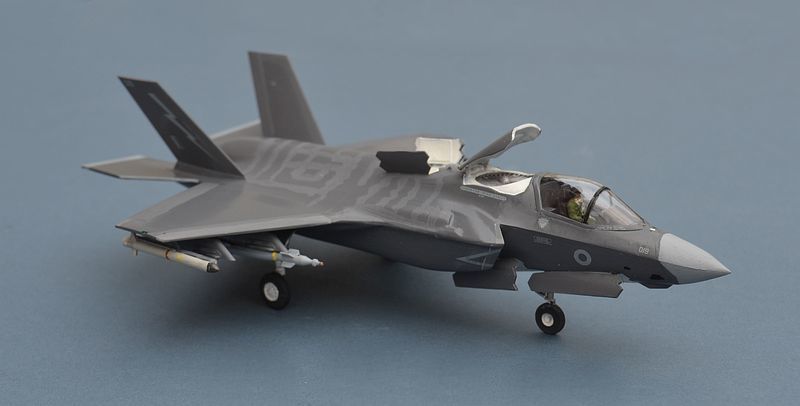
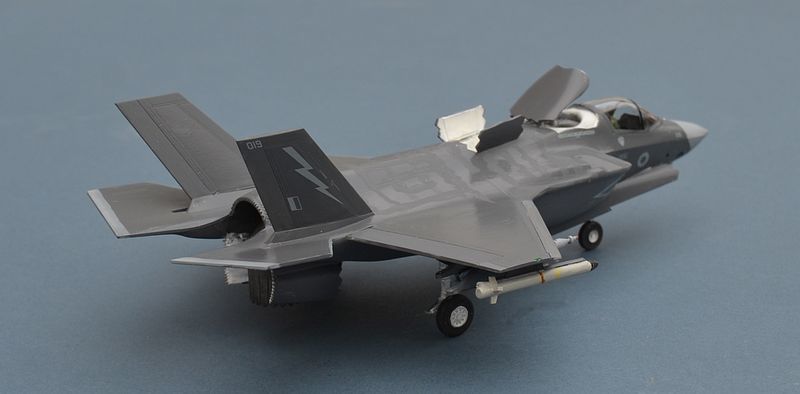
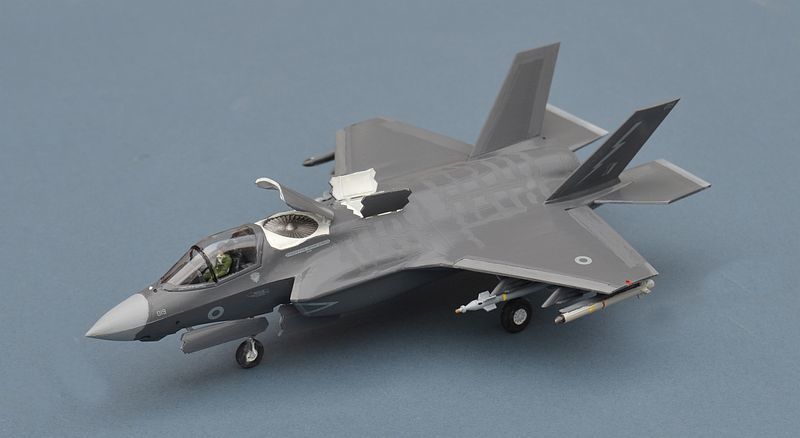
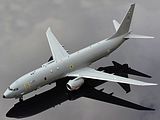
The BPK kit is expensive and not an easy build, but results in a very pleasing replica of this important modern aircraft. (link to build page).
The Boeing P-
The airframe is a strengthened development of Boeing’s civilian 737-
The Royal Air Force received the first of 9 Poseidon MRA.1 aircraft in 2019, with the last delivery in 2022. The aircraft operate out of RAF Lossiemouth in Scotland and are manned by crews from 120 Sqn and 201 Sqn, supported by 42 Sqn as their OCU. In 2024 it was announced that RAF aircraft would be adapted to allow them to carry the advanced British Sting Ray Mod 1 torpedo, which is far more capable than the US Mk.54. However, RAF aircraft still lack wing pylons and are (as yet) unable to carry any other armament.
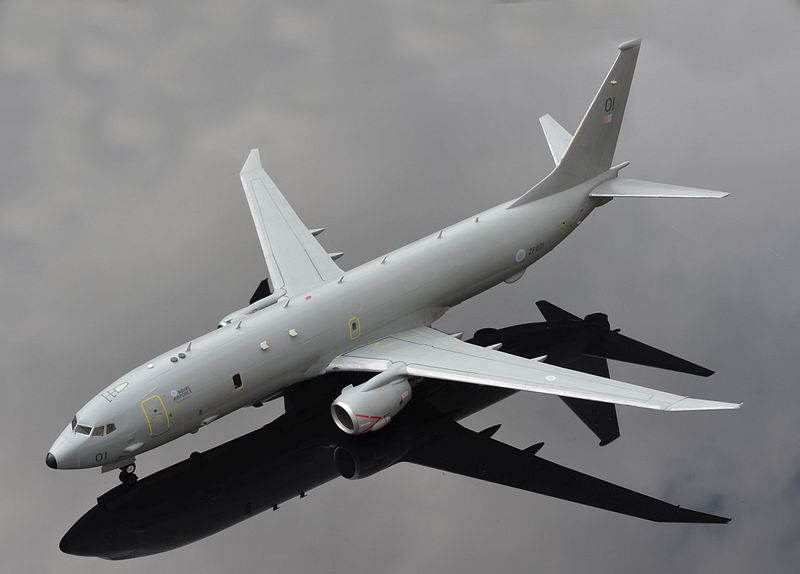
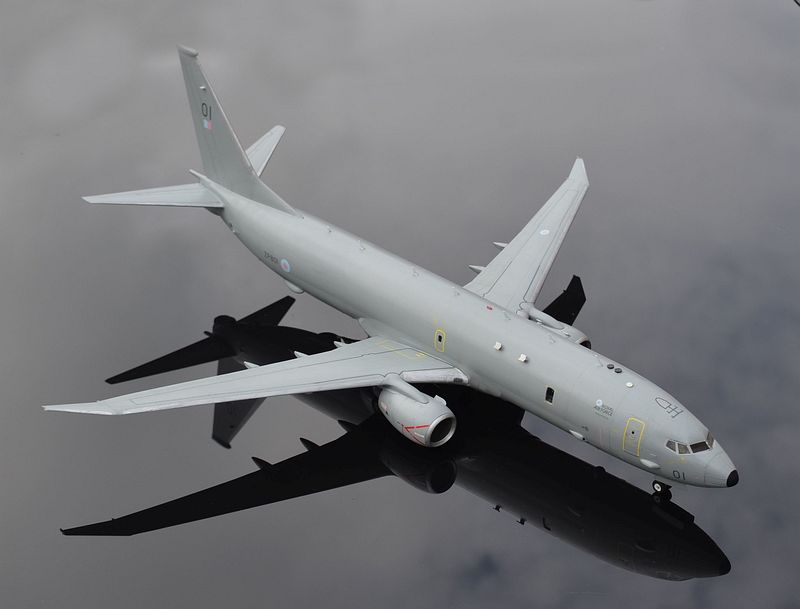
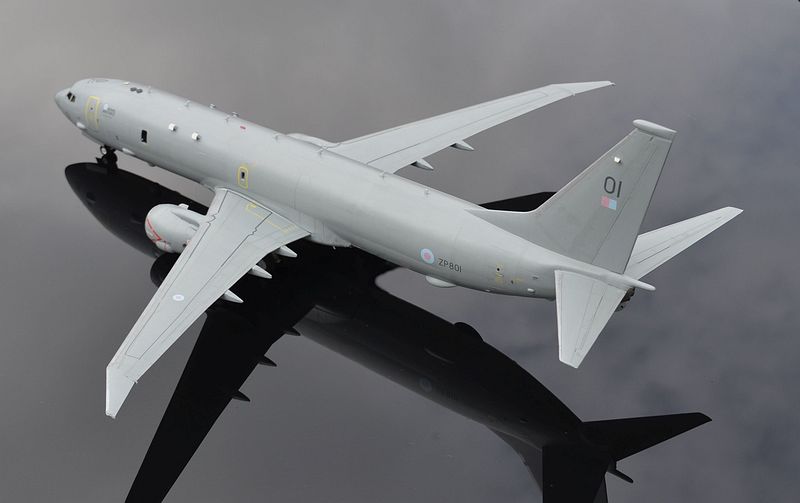
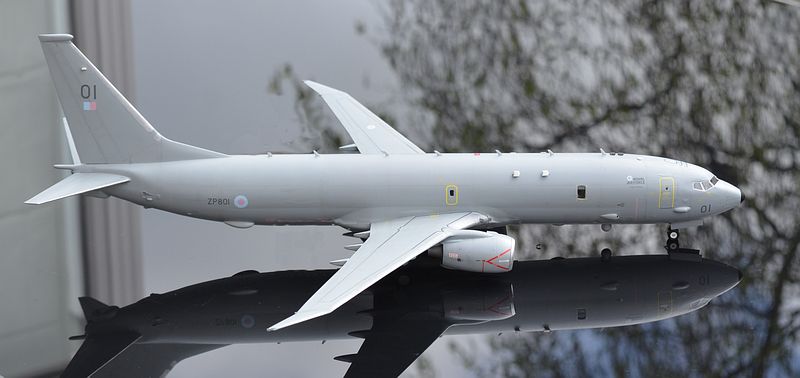
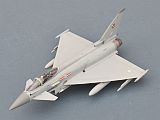
The Airfix Starter Set Typhoon FGR4 is light years ahead of previous issues in terms of detail and buildability. (link to build page).
Operating four Eurofighter Typhoon FGR4, 1435 Flight is based at RAF Mount Pleasant in the Falkland Islands, providing air defence for the Falkland Islands, South Georgia and the South Sandwich Islands
The Typhoon forms the mainstay of the current RAF Fast Jet combat fleet, working
alongside the newer F-
1435’s Typhoons are the last Tranche 1 aircraft remaining in RAF service. Although converted to FGR4 standard and given a limited ground attack capability, they are not fitted to operate the Meteor air to air missile or the Brimstone ground attack missile used by later tranches. Nevertheless they do carry the latest AIM120D AMRAAM BVR missile and the highly manoeuvrable ASRAAM short range dogfighting missile. Although fitted with the standard Mauser cannon, it is not clear whether these are able to be used.
